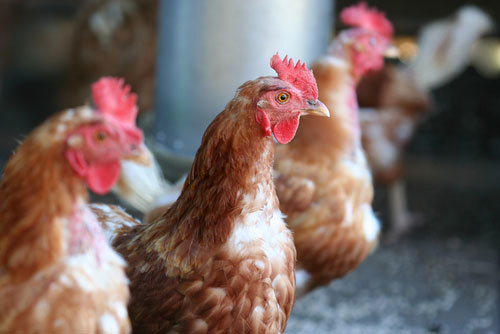Will the CDC's Bird Flu Vaccine Work if the Virus Mutates?

The move by U.S. health officials to start makinga vaccine against the new strain of bird flu is a good idea, regardless of whether the virus ultimately changes, as flu viruses often do, experts say.
On Thursday (April 4), the Centers for Disease Control and Prevention (CDC) said it had begun work on a vaccine against H7N9, a new bird-flu virus causing illness in China. So far, health officials have reported that 16 people have become sick with the virus, six of whom died. Currently, the virus does not appear to spread between people.
The CDC plans to "build" the virus to use it in its vaccine, rather than wait for a sample to ship from China, the New York Times reported. Using the H7N9 genetic sequence as a blueprint, CDC researchers will synthesize genes for part of the virus and attach them to the "backbone" of another virus known to grow well in labs, the Times said. Making the vaccine is just a precaution — health officials aren't sure yet if they'll need to use it.
"I think it’s a good idea to start with anything we can," said Dr. Arnold Monto, a professor of epidemiology at the University of Michigan School of Public Health. He noted that it could take at least a month to make even a provisional vaccine, and six months to manufacture one that can be used on a wider scale.
Even if the H7N9 virus changes during the time it takes to make a vaccine — for instance, the virus could mutate so that it's able to spread between people — having a vaccine will still be an advantage.
"Protection, even if it’s partial protection, is better than no protection," Monto said.
Dr. Richard Webby, a bird-flu expert and infectious disease researcher at St. Jude Children's Research Hospital in Memphis, Tenn., said that while there's a possibility the virus could mutate to spread between people, such a change would not necessarily impact the effectiveness of a vaccine that we make now.
Get the world’s most fascinating discoveries delivered straight to your inbox.
Starting early is important because it could take some time to figure out how to make an effective vaccine. Researchers know from previous experience with this family of viruses (H7 viruses) that people may need two shots in order to build up immunity, and the vaccine might need an additional component, called an adjuvant, to boost its effectiveness, Monto said.
If the H7N9 virus is still causing illness by the time researchers are finished making a provisional vaccine, known as a seed vaccine, it's almost certain that at least some batches will be manufactured (though not necessarily used), Webby said. However, before it's manufactured, it will need to undergo safety tests, Monto said.
Researchers are concerned about H7N9 not only because it's novel, but also because it has genetic markers that suggest it has adapted to grow in humans. However, it's possible this marker only shows up once the virus infects people, and the virus does not naturally have this marker when it infects birds, Webby said. Researchers need to find the source of the virus — be it birds or another organism — to know whether the marker is inherent in the virus.
Today (April 5), the CDC said there is no need for the general public to be alarmed about this virus, because it does not appear to be spreading between people, according to NBC News.
Antiviral medications appear to work against the virus, which is good news, Monto said. However, antivirals have not yet been used to treat patients with H7N9, according to the World Health Organization. (The medications must be given very early on in the course of infection in order to be effective.)
Pass it on: Starting work on a vaccine against the new bird flu is a good idea, experts say.
This story was provided by MyHealthNewsDaily, a sister site to LiveScience. Follow Rachael Rettner @RachaelRettner. Follow MyHealthNewsDaily @MyHealth_MHND, Facebook & Google+.

Rachael is a Live Science contributor, and was a former channel editor and senior writer for Live Science between 2010 and 2022. She has a master's degree in journalism from New York University's Science, Health and Environmental Reporting Program. She also holds a B.S. in molecular biology and an M.S. in biology from the University of California, San Diego. Her work has appeared in Scienceline, The Washington Post and Scientific American.


